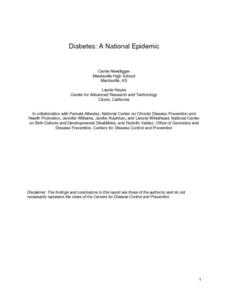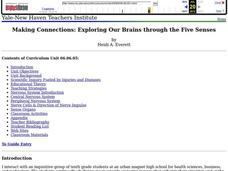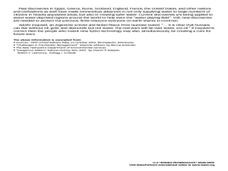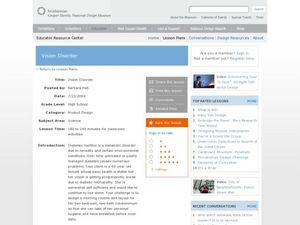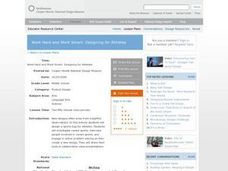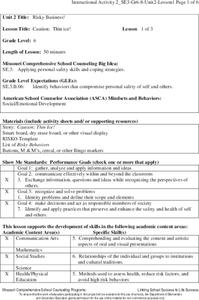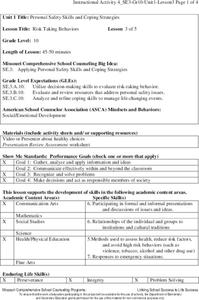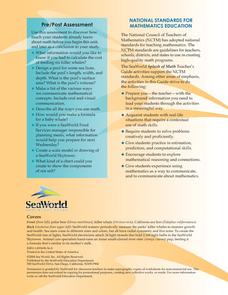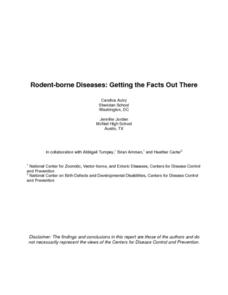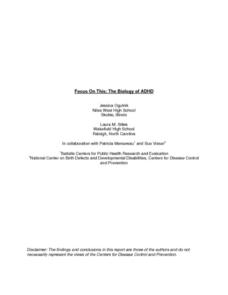Curated OER
Tracking the Monster
Young scholars exchange fake bodily fluids with other students. They track the spread of the "infection" throughout the population of young scholars and determine where the infection began in the class. Every student in the class...
Curated OER
Genetic Engineering of Crop Plants
Students explore genetic engineering and it biological and ethical implications. By conducting experiments with genetically engineered corn and plain corn they determine the difference in taste. Students also discover the effects of...
Curated OER
Acid Stomach
Students develop an understanding of how aspirin works and how understanding it's interaction with other chemicals in the body aided doctors in medical research. They complete a lab that compares the reaction of regular aspirin and...
Curated OER
Diabetes: A National Epidemic
Students investigate the disease of diabetes. They observe research results to graph the trends of diabetes to contribute to the problem of being overweight. They explain in class discussion the physiological changes that occur in the...
Curated OER
Cardiovascular Disease and Fitness: Exploring the Rhythm of Your Pulse
Students explore several examples of cardiovascular diseases. In this anatomy instructional activity, students explain why physical fitness is very important. They count their pulse rate and record them on a data table.
Curated OER
Making Connections: Exploring Our Brains through the Five Senses
Students identify structures of the brain, and neurons and analyze their functions. In this nervous system lesson students create drawings and models of anatomy.
Curated OER
The Mysterious Tragedy at Lake Nyos
Students present a convincing explanation of the Lake Nyos event and propose a solution to prevent future tragedies at central and western African lakes.
Curated OER
Hydro-Technology
Students create a design for water collection, sanitation, or supply. In this hydro-technology lesson, students learn about the global water crisis. Groups of students read water technology articles, draw or design a device or process,...
Curated OER
Vision Disorder
Pupils design a morning routine for a 60 year old female senior with vision disorder. In this biology lesson, students collaborate with their team to come up with possible solutions. They present at least two ideas of their design to the...
Curated OER
Gingerbread Baby v. Gingerbread Boy #7
Learners read two stories. In this comparison lesson, students read "The Gingerbread Baby," by Jan Brett and the original "Gingerbread Boy." Learners use a Venn Diagram to compare and contrast the two stories.
Curated OER
Water Magic
Learners conduct experiments with ice, water and steam to observe the water cycle. They discuss substances that water accumulates from the Earth as it moves through its cycle.
Curated OER
The Importance of Making Labs a Priority
The benefits of inquiry-based exploration can be attained in any classroom.
Curated OER
Work Hard and Work Smart: Designing for Athletes
Students design new insights into work tied into athletes. Students design a sports bag for athletes. Students investigate varied sports. They interview people involved in varied sports. Students engage in active problem solving as they...
Missouri Department of Elementary
Fatal Accident
While there may not be any ghostbusters in the neighborhood, there are plenty of emergency response agencies ready to give support if something is amiss. To that end, instructors invite a member of an emergency response agency to address...
Missouri Department of Elementary
Caution: Thin Ice!
Sixth graders listen to a story titled "Thin Ice!" then partake in a whole-class discussion asking and answering questions about what was read. Scholars brainstorm risky behaviors in preparation for a game of RISKO—a game similar to...
Missouri Department of Elementary
Risk Taking Behaviors
Sophomores can be sometimes wise and sometimes foolish. The same can be said for their behaviors. After watching a presentation about risk taking behaviors, class members discuss the presentation in small groups, and then complete a...
Curated OER
Nutrition and the Media: Cereal Box Consumerism
How many treats do you buy each week? Learners investigate diets and how the media tricks consumers into purchasing unhealthy snacks. They will investigate the designs and logos affiliated with cereal boxes and identify specific phrases...
Sea World
Splash of Math
How can kids use math to learn about marine life? Combine math skills with science lessons in a resource featuring activities about life in the sea. Kids graph and calculate data, solve complex word problems, measure geometric shapes,...
Curated OER
Lightning Safety
Students investigate how lightning is produced and ways they can keep themselves safe during a lightning storm. After a lecture/demo, students use a worksheet imbedded in this plan to reinforce the concepts taught.
Curated OER
Rodent-borne Diseases: Getting the Facts Out There
High schoolers conduct research of the hantavirus pulmonary syndrome (HPS) or lymphocytic choriomeningitis (LCMV). They obtain the information and create a public announcement in the form of a brochure, newsletter, poster, radio...
Curated OER
Autism Spectrum Disorders: The New Rainbow
Students conduct research into the area of Autism Spectrum Disorders. They use the internet and a variety of resources in order to obtain information. Students use the information to take part in a writing project of authoring a new...
Curated OER
The Aging Brain: A Lesson on Alzheimer's Disease
Young scholars investigate the aging brain and its relationship to the occurrence of Alzheimer's disease. They need to have prior knowledge of brain and nervous system anatomy in order to participate in this lesson. Students compare an...
Curated OER
The Cantankerous Pathogen
Students explore what factors influence the spread of infectious diseases. They explain how human manipulation of the environment affects the transmission of diseases.
Curated OER
The Biology of ADHD
Students investigate the biology of ADHD and its implications upon the formation and treatment of the disease. They draw and label the parts of a neuron. Also, they describe the neurotransmission cycle. Students create a list of pros and...
Other popular searches
- High School Health Triangle
- High School Health Projects
- High School Health Class
- High School Health Lessons



